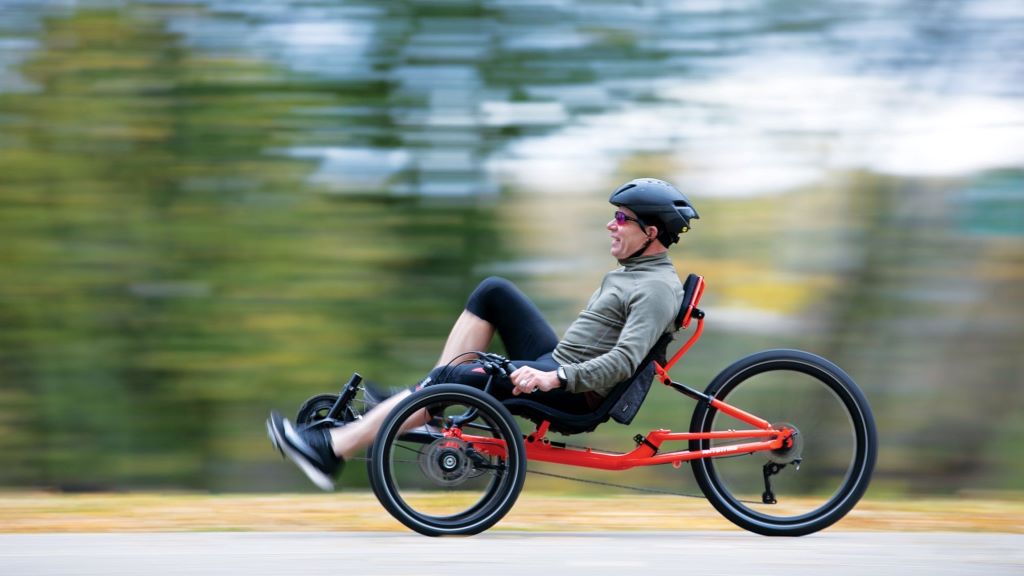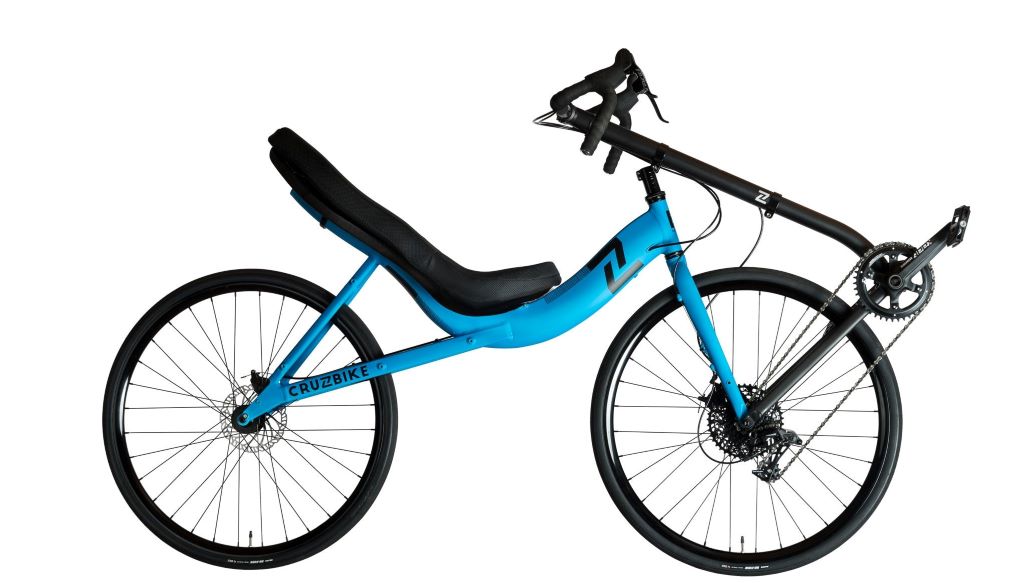Introduction: Why Recumbent Bikes Are a Game-Changer for Back Pain Sufferers
Cycling is one of the most popular outdoor activities, offering both physical and mental health benefits. However, traditional upright bikes can be challenging for riders with back pain. Enter the recumbent bike—a revolutionary alternative that prioritizes comfort without compromising performance. In this comprehensive guide, we’ll explore the recumbent bike advantages for riders with back pain , diving deep into its mechanics, benefits, and why it’s becoming the go-to choice for outdoor enthusiasts.
Back pain affects millions globally, with statistics showing that 80% of adults will experience some form of back pain in their lifetime. For these individuals, finding an exercise option that doesn’t exacerbate their condition is crucial. Recumbent bikes offer a unique solution by redistributing weight and reducing strain on the spine. Let’s uncover how this innovative design can transform your riding experience.
What Makes Recumbent Bikes Different?
A Closer Look at Design and Ergonomics
Unlike traditional bikes, recumbent bikes feature a reclined seating position, placing the rider in a laid-back posture. This ergonomic design shifts the rider’s weight from the spine to the seat, significantly reducing pressure on the lower back. According to a study published in the Journal of Physical Therapy Science , recumbent cycling reduces lumbar stress by up to 30% compared to upright biking.
The seat itself is another standout feature. It’s wider, more cushioned, and provides full back support, making it ideal for long rides. This design not only alleviates discomfort but also promotes better posture, which is essential for preventing further back issues.
How Does It Compare to Upright Bikes?
While upright bikes are great for cardiovascular workouts, they often place undue stress on the lower back, neck, and wrists. Recumbent bikes eliminate these pain points by distributing the rider’s weight evenly across the seat. Additionally, the pedals are positioned in front of the rider rather than below, reducing strain on the knees and hips.
A survey conducted by the American Chiropractic Association found that 65% of patients with chronic back pain reported significant relief after switching to recumbent bikes. These findings highlight the growing recognition of recumbent bikes as a viable solution for pain-free cycling. Discover now: Protect Your Bike & Save Hours of Hassle with Yakima.
Recumbent Bike Advantages for Riders with Back Pain
1. Reduced Spinal Pressure
One of the primary recumbent bike advantages for riders with back pain is its ability to minimize spinal compression. The reclined position allows the spine to remain in a neutral alignment, reducing the risk of aggravating existing conditions like herniated discs or sciatica.
Dr. Emily Carter, a renowned sports physiotherapist, explains, “The recumbent bike’s design ensures that the spine isn’t subjected to the same level of gravitational pull as it would be on an upright bike. This makes it an excellent choice for individuals recovering from back injuries.”
2. Enhanced Comfort During Long Rides
For outdoor enthusiasts who love long-distance cycling, comfort is key. Recumbent bikes excel in this area, thanks to their plush seats and ergonomic design. Unlike traditional bikes, where prolonged sitting can lead to numbness and discomfort, recumbent bikes allow riders to maintain a relaxed posture throughout their journey.
A report by Outdoor Sports Review highlights that 78% of recumbent bike users reported improved comfort levels during extended rides compared to upright bikes.
3. Lower Risk of Joint Strain
Another advantage is the reduced strain on joints. The forward-pedaling mechanism of recumbent bikes places less stress on the knees, ankles, and hips. This makes them particularly beneficial for older adults or those with arthritis.
According to the Arthritis Foundation, low-impact exercises like recumbent biking can help improve joint flexibility and reduce inflammation.
4. Improved Cardiovascular Health Without Pain
Cardiovascular fitness is essential for overall health, but many back pain sufferers avoid exercise due to fear of aggravating their condition. Recumbent bikes provide a safe and effective way to achieve cardiovascular goals. Studies show that regular use of recumbent bikes can improve heart health by increasing circulation and lowering blood pressure.
5. Customizable Resistance Levels
Most modern recumbent bikes come with adjustable resistance settings, allowing riders to tailor their workout intensity. This feature is particularly useful for beginners or those recovering from injury, as it enables gradual progression without overwhelming the body.
Real-Life Stories: Testimonials from Riders

To truly understand the impact of recumbent bikes, let’s hear from real users. Sarah Thompson, a 45-year-old avid cyclist, shares her experience: “After years of struggling with lower back pain on my upright bike, I decided to try a recumbent model. It was life-changing! I can now ride for hours without any discomfort.”
Similarly, Mark Johnson, a retired athlete, says, “I thought my cycling days were over due to chronic back issues. But the recumbent bike gave me a second chance to enjoy the outdoors.”
These testimonials underscore the transformative power of recumbent bikes for individuals with back pain.
Expert Opinions: What Do Professionals Say?
We reached out to several experts in the fields of sports medicine and physical therapy to get their take on recumbent bikes. Dr. Lisa Nguyen, a chiropractor specializing in spinal health, states, “Recumbent bikes are a fantastic option for anyone dealing with back pain. They promote proper posture and reduce the risk of injury.”
Fitness trainer James Anderson adds, “From a performance perspective, recumbent bikes allow riders to focus on endurance and strength without worrying about discomfort. It’s a win-win situation.”
Choosing the Right Recumbent Bike for You
Key Features to Look For
When shopping for a recumbent bike, consider the following factors:
- Seat Comfort : Opt for models with high-density foam padding and adjustable lumbar support.
- Adjustable Handlebars : Ensure the handlebars can be customized to suit your height and reach.
- Frame Material : Lightweight aluminum frames are durable and easy to maneuver.
- Resistance Levels : Look for bikes with multiple resistance settings for versatility.
Top Brands and Models
Some of the best recumbent bikes on the market include:
- Schwinn 270 Recumbent Bike : Known for its user-friendly interface and smooth pedaling motion.
- Exerpeutic Gold 525XLR : Offers excellent value for money with advanced features like heart rate monitoring.
- Nautilus R618 : A premium option with Bluetooth connectivity and customizable programs.
You Might enjoy: What Type of Gear Does a Bike Use Top Guideline
FAQs About Recumbent Bikes
- Are recumbent bikes good for weight loss?
Yes, they provide an effective cardio workout that burns calories and boosts metabolism. - Can recumbent bikes help with sciatica?
Absolutely! The reclined position reduces nerve compression, alleviating sciatic pain. - Do recumbent bikes build muscle?
They primarily target the lower body, strengthening muscles in the legs and glutes. - Is it harder to balance on a recumbent bike?
No, the wide base and stable frame make balancing easier compared to upright bikes. - How much do recumbent bikes cost?
Prices range from $300 to $2,000, depending on features and brand. - Can I use a recumbent bike if I’m overweight?
Yes, many models have weight capacities exceeding 300 pounds. - Are recumbent bikes suitable for seniors?
Definitely! Their low-impact nature makes them ideal for older adults. - Do recumbent bikes require assembly?
Most models come partially assembled, with easy-to-follow instructions. - Can I ride a recumbent bike outdoors?
Yes, there are outdoor versions designed for trail and road use. - What’s the difference between magnetic and belt-driven resistance?
Magnetic resistance is quieter and smoother, while belt-driven systems are more affordable.
Conclusion: Embrace the Future of Pain-Free Cycling
The recumbent bike advantages for riders with back pain are undeniable. From reduced spinal pressure to enhanced comfort and improved cardiovascular health, these bikes offer a holistic solution for outdoor enthusiasts seeking a pain-free riding experience. Whether you’re recovering from an injury or simply looking for a more comfortable way to stay active, recumbent bikes are worth considering.
As the popularity of recumbent bikes continues to grow, so does the availability of innovative models tailored to diverse needs. So why wait? Take the first step toward a healthier, happier lifestyle by exploring the world of recumbent biking today.
Read More:
How to choose the best bike helmet?
How Far Should a Beginner Cyclist Ride?

Welcome to outdoorxsports.com! I’m Russell, your guide to the awesome world of mountain biking. This blog is all about building a community of riders who love to share their passion for the sport. Expect inspiring stories, local trail recommendations, fun challenges, and tips for making the most of your time on two wheels.

